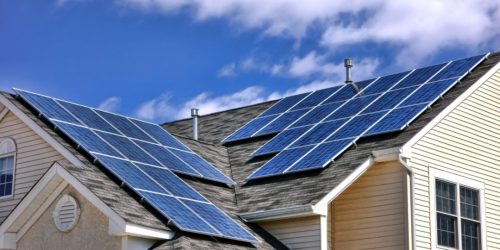As those costs decrease, adoption becomes more common.
In the first few months of his administration, one of President Joe Biden’s top policy priorities has been addressing the threat of climate change—while also improving infrastructure and creating jobs to generate economic growth.
Biden has stated a goal of reaching 100% pollution-free electricity by 2035, which means dramatically scaling up renewable energy production in the U.S. To that end, Biden’s proposed American Jobs Plan would include investments in clean energy.One of the potential beneficiaries of this focus is the Solar Power Industry, which is seeing rapid growth as the costs associated with solar decline.
For many years, solar power was too expensive to be adopted at scale as a major source of energy production, but this has changed in recent years. One of the biggest reasons for the decline in costs has been technological innovation. Solar technology has become more reliable and more efficient over time, which lowers the cost of generating energy. As those costs decrease, adoption becomes more common, which allows solar cell manufacturers to achieve economies of scale and lower prices even further.
Government support has also been a major factor:billions in federal investment for renewablesduring the Great Recession helped spur the technological advances seen in the last decade, and the federal government—along with many states and localities—has long offered incentives to subsidize household solar adoption. These factors reached an inflection point in the mid-2000s, and solar production in the U.S. has been growing exponentially ever since.
In 2006, solar generated around 507,000 megawatt hours of energy and represented .01% of U.S. energy generated by the electric power industry. By 2019, solar thermal and photovoltaic accounted for 71,936,822 megawatt hours—around 140 times more than in 2006.
Source: Muscatine Journal, Lattice Publishing
Image credit: Alamy Stock Photo





